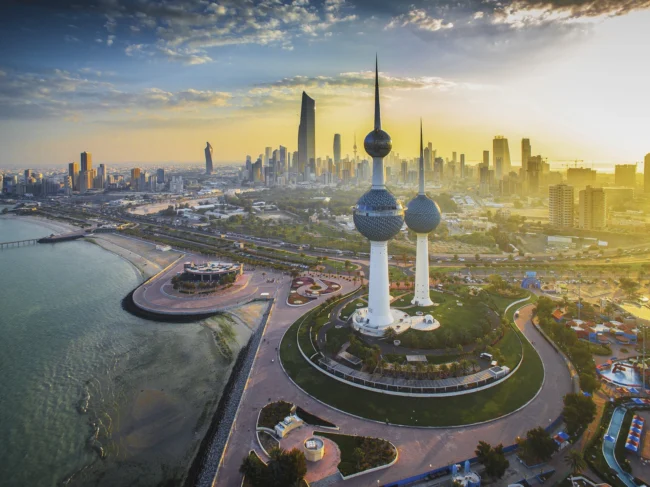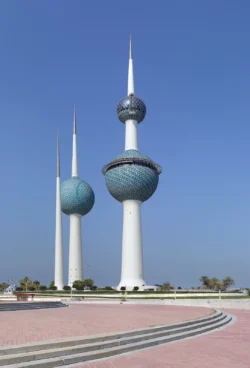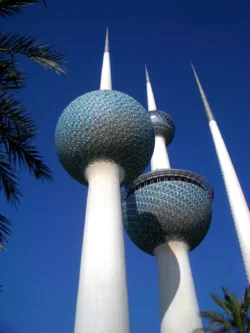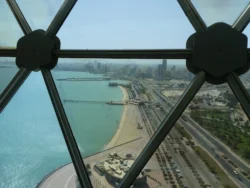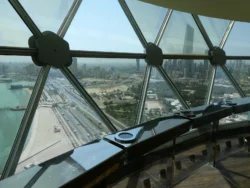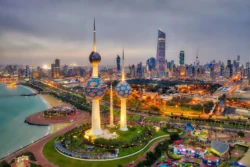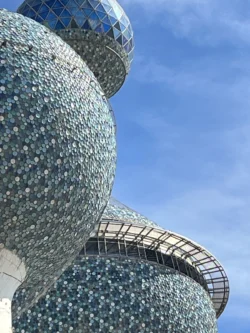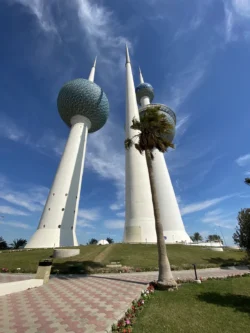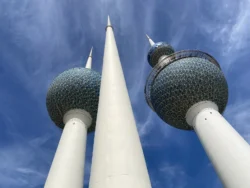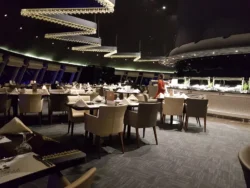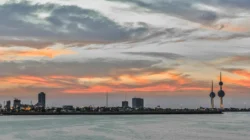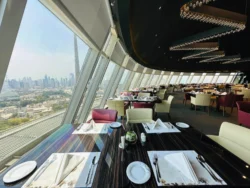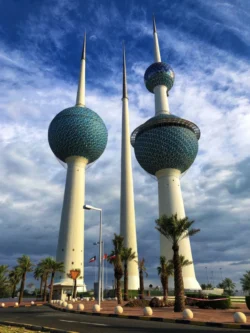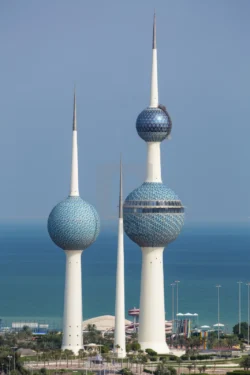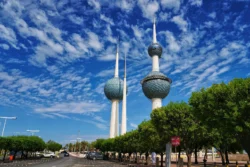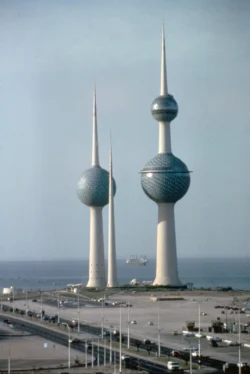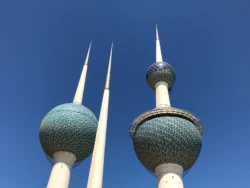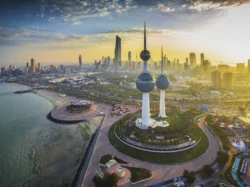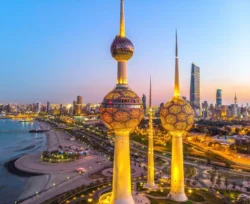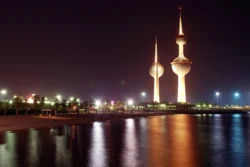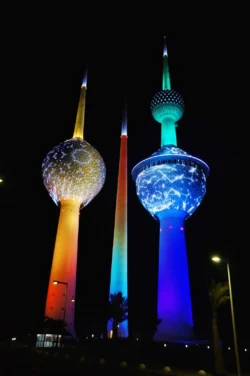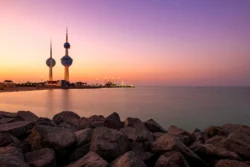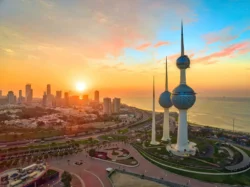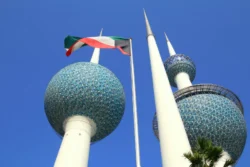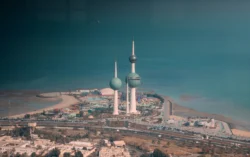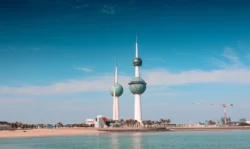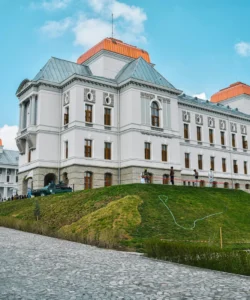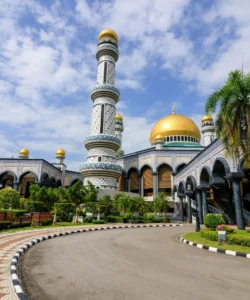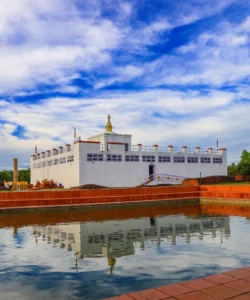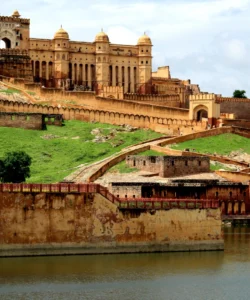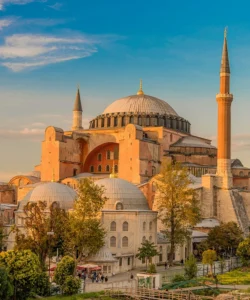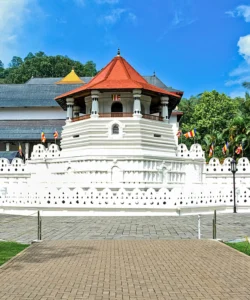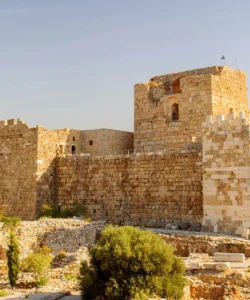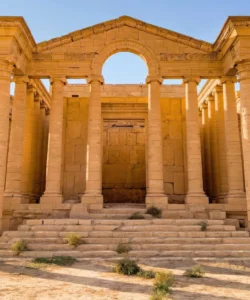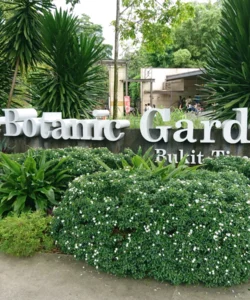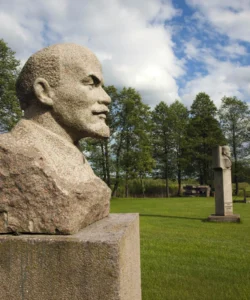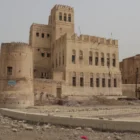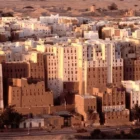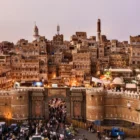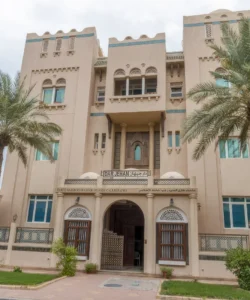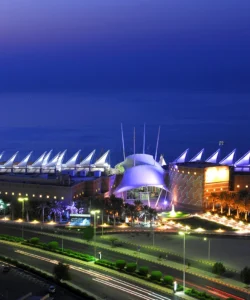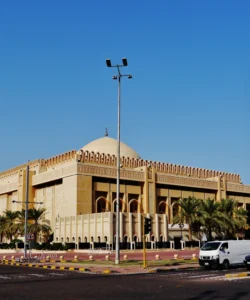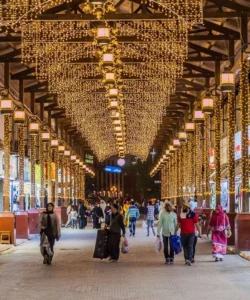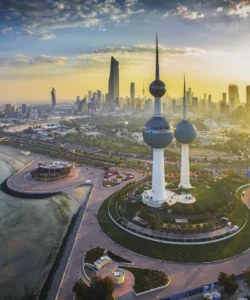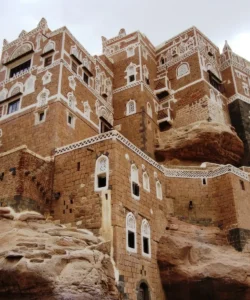The Kuwait Towers are a distinctive group of three slender towers located on a promontory jutting into the Persian Gulf in Kuwait City. Inaugurated in 1977, these towers quickly became an iconic symbol of Kuwait’s modernity, blending functional design with striking aesthetics. While primarily serving as water reservoirs, they also offer public facilities, including a revolving restaurant and observation decks, making them a prominent tourist attraction.
Listen to an introduction about Kuwait Towers
Name and Address
- Name: Kuwait Towers (Arabic: أبراج الكويت, Abraj Al-Kuwait)
- Address: Arabian Gulf Street, Sharq district, Kuwait City, Kuwait. They stand prominently on a promontory overlooking Kuwait Bay.
How to Get There
The Kuwait Towers are centrally located in Kuwait City and are easily accessible.
- By Car/Taxi: Taxis are readily available throughout Kuwait City. You can simply tell the driver “Kuwait Towers.” There’s also a dedicated parking area for visitors.
- By Public Bus: Several public bus routes have stops near the Kuwait Towers. You can check the Kuwait Public Transportation Company website for routes and timetables.
- On Foot: If you’re staying in a nearby hotel, walking to the towers along the Arabian Gulf Street promenade can be a pleasant experience, especially during cooler months.
- On-Site: The viewing sphere is typically open from 8:00 AM to 11:00 PM. There is an entrance fee (around KD 3 per person, with free entry for children under four). If you dine at the revolving restaurant, the viewing deck access is often included.
Landscape and Architecture
The architecture of the Kuwait Towers is a remarkable blend of modern engineering and symbolic design, reflecting both Kuwait’s aspirations and its cultural heritage.
- Three Towers: The complex consists of three towers of varying heights:
- Main Tower: Standing at 187 meters (613.5 feet) tall, it features two spheres. The lower sphere houses a 4,500-cubic-meter water reservoir, while the upper sphere contains a revolving restaurant, a cafe, a lounge, and a reception hall. The upper sphere completes a full rotation every 30 minutes, offering panoramic 360-degree views.
- Second Tower: At 147 meters (482 feet) tall, this tower is solely a water reservoir.
- Third Tower: The smallest, at 113 meters (371 feet) high, is purely sculptural and houses equipment for lighting the other two towers, enhancing their visual impact, especially at night.
- Spherical Design: The distinctive spheres are covered with 55,000 enameled steel plates in shades of blue, green, and grey, harmonizing with the colors of the sky and the Arabian Gulf. This spherical design is often interpreted as representing traditional Arabian perfume containers or the globe itself.
- Functional and Aesthetic: Designed by Swedish architect Sune Lindström (with architectural work by Malene Björn), the towers are a unique example of transforming essential infrastructure (water storage) into a national architectural landmark. Their design is a synthesis of Western technology and Islamic culture, with the slender shafts evoking minarets.
- Engineering Feat: Given their prominent coastal location and the challenging soil conditions, the construction involved advanced engineering technologies, particularly for the foundations.
What Makes It Famous
- Iconic National Symbol: The Kuwait Towers are the most recognizable landmark of Kuwait, symbolizing the nation’s modernization, progress, and resilience, especially after the Gulf War.
- Unique Design: Their distinctive three-tower, spherical design is globally recognized and stands out as a pioneering example of modern Islamic architecture.
- Panoramic Views: The revolving observation deck in the main tower offers breathtaking 360-degree views of Kuwait City, the coastline, and the Persian Gulf, particularly stunning at sunset and night.
- Dual Functionality: They are famous for successfully combining vital public utility (water storage) with public leisure and dining facilities, making them both practical and a tourist attraction.
- Architectural Award: The towers received the prestigious Aga Khan Award for Architecture in 1980, recognizing their innovative design and cultural relevance.
Differences from Some Other Attractions
- Functional Landmark: Unlike purely aesthetic landmarks (like monuments or historical sites) or solely functional buildings, the Kuwait Towers are famous for their dual purpose as both a vital part of Kuwait’s water supply system and a prominent public attraction. This blend of utility and iconic design is quite unique.
- Modern Symbolism: While many famous structures are ancient wonders, the Kuwait Towers are a relatively modern construction (completed in the 1970s) that explicitly symbolizes a nation’s post-oil boom development and forward-looking vision, rather than a historical empire.
- Group of Towers with Distinct Roles: Instead of a single tall building, the complex comprises three towers, each with a distinct function (main observation/restaurant, water storage, lighting), yet forming a cohesive and symbolic whole.
- Architectural Fusion: Their design consciously merges Western technology with Islamic culture and traditional motifs, creating a contemporary architectural expression that is distinctly Kuwaiti.
Kuwait Towers Photos:
